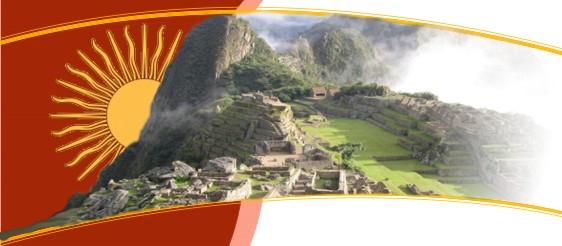MUSEUMS:
SAN FRANCISCO (1625).- On the corner of Ganarra-Independencia. Holds a rich collection of
retables, the most outstanding being those located on the crosspiece due to their design,
carved work, and gold and polychrome relief San Francisco preached from the still -
preserved Renaissance pulpit and announced the earthquake of Saint Valentine that
destroyed the city (1410211619).THE MERCED (1636).- Two svelte belfries decorate the superposition of architectonic
orders that decorate its portal. It is located on the 5th block of Pizarro, and its main
altarpiece proceeds from the Church of the Society. Outstanding are the polychrome
embossments of the pendentive arch and the only Rococo style organ in the whole city.
THE CARMEN (1725). - Considered as the most important architectonic complex in the
region. It stands on the comer of Colon and Bolivar. Its interior holds valuable retables,
liturgical furnishings and can vases of great value as well as images of high artistic
quality The main retable was created by the Master Fernando Collado de la Cruz, a black
free man (1759).
NATIONAL UNIVERSITY OF TRUJILLO
ARCHAEOLOGICAL MUSEUM contains cultural
expressions of Peru's diverse Pre-Hispanic epochs such as: ceramics, weavings, metal, etc.
In addition, there is. a special section dedicated to the citadel of Chan Chan.
CASSINELLI ARCHAEOLOGICAL MUSEUM holds highly valuable pieces from different cultures such as:
Recuay, Chavin, Moche, Chimu, etc. all unique in their class.
NATIONAL UNIVERSITY OF TRUJILLO
ZOOLOGICAL MUSEUM Exhibits samples of the
varied fauna of the region.
CATHEDRAL MUSEUM Next to the cathedral. Holds valuable sculptures, canvases and an
enigmatic crypt.
- CARMELITA PICTURE GALLERY Next to the Carmen Church; holds beautiful canvases of excellent
quality.
- MUSEUM OF THE REPUBLIC Located in the home of the Marshal of Orbegoso and
Moncada.
HOME OF THE EMANCIPATION.- Pizarro N'610. Here was sworn Independence (29-XII-1920). The Royal
Ensign of the epochof Don Tiburcio Urquiaga was its proprietary until the XIX century. To
this century date back the entrance hall murals, work of an Indian artist who put together
the engravings of the Bishop Martinez Compañon. When the home was restored in 1840, the
neoclassic style that it presently displays was imprinted. The architectonic quality
stands out due to the symmetry of its patios and the harmonious distribution of its
atmospheres, lattices, and marble floors.
ITURREGUI PALACE.- Pizarro No 688. An exquisite neoclassical two-plan mansion with an
ample patio and rear court around which are distributed rooms, a temple, a refectory, etc,
all showing the magnificence of their lattices, svelte columns, marble floors and ceilings
with golden moldings.
BRACAMONTE HOME.- Independiente No 441. Also called the Lizarzaburu home. Its facade
displays an ample steel lattice wrought with refined artistic expression. The entrance
hall and the extensive patios are signs of the opulence and high lifestyle of the epoch.
The panelled ceilings, the svelte columns and Baroque paintings are all worthy of
admiration.
CALONGE ROME.- Jiron Pizarro No 446. It is one of the few Republican style homes
that partially maintain the Baroque division of its patio. It has preserved valuable works
of art such as PreHispanic ceramics. Refined furniture, mirrors and paintings, as well as
antique banners with the Spanish and Trujillo coats of arms.
IN THE SURROUNDLIVGS.
ARCHAEOLOGICAL MONUMENTS. Since the Pre-Columbian epoch, this valley has concerned itself
with cultural advancement. Testimonies of its progress are the remains of:
CHAN CHAN.- The nucleus of the Chimu culture (XII century). It is considered the
largest mud city in the world and UNESCO has declared it a Cultural Patrimony of Humanity.
In an area of 14 krn2 are scattered palace remains, popular city districts, cultivation
fields, cementeries and all that was achieved by this culture extended on the North
Peruvian coast.
DEAD HORSE (CABALLO MUERTO).- With an antiquity estimated at 1,000 B.C., these remains are
located in the Laredo Cooperative. Out of its 8 mounds, the Burial Ground of the Kings
(Huaca de los Reyes) is the most significant Its structure is that of superimposed
platforms distributed in an U shape, with ceremonial patio in the center surrounded by
polycrome heads of feline gods
TEMPLES OF THE SUN AND THE MOONS- These were the religious center of the Moche culture in the II-VIII
centuries, and they extended from Ancash to Piura. They are constructed out of adobe,
forming superimposed platforms that reach a considerable height, which allows them to
dominate the valley. They are located left of the Moche River.
If you are looking for
Peru
Tour Packages you are in the right place!
MALABRIGO PORT - Better known as Chicama port, 70 kms. north of the city. Highly
visited by tourists interested in surfing. Here one finds the longest waves in the world.
ARTISANSHIP. Known for the beauty of its: carved work in wood, leather repousse
work, mud and clay moldings, printed and engraved gourds. Trujillian wire windows, gold
and silver work, engravings of representative customs, totora rafts, straw hats, etc.
FOLKLORE.
The Marinera dance, which stands, outs and has given
Trujillo the title of "The Marinera Capital", is a lively, festive dance which
ends every party.
The Huayno, typical of this mountainous region, is a
joyful, competitive dance between the man and the woman. Also typical of this region are a
diversity of native dances such as: The Negritos, The Huanquilla. The Mojigangas, The
Turcos, The Huaris, The Huananayes, etc.
TYPICAL DISHES:
A wide variety of traditional medleys including: seco de
cabrito a cabrito de leche (baby goat dishes), causa en lapa (vegetable and yellow potato
dish), ajiaco (hot potato stew), cuy con maní (guinea pig with peanuts), shambar,
theologian soup, duck with rice, Trujillan sangrecita, cebiche, steamed and hot dishes; as
well as the delicious king-kong, alfajor machacado de membrillo and the exquisite chicha
de jora (fermented maize beverage).
|
